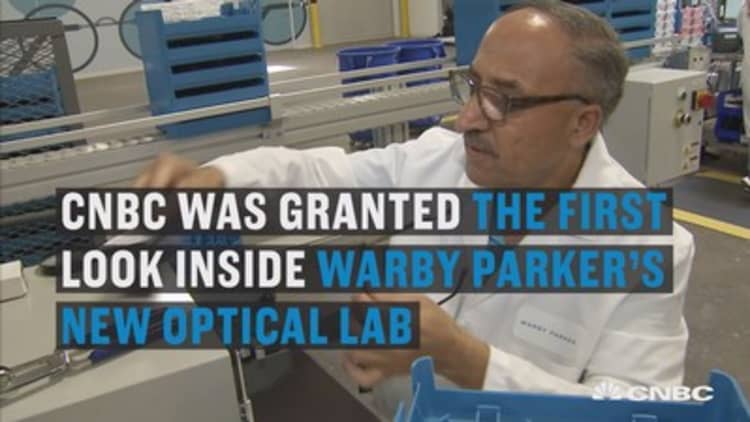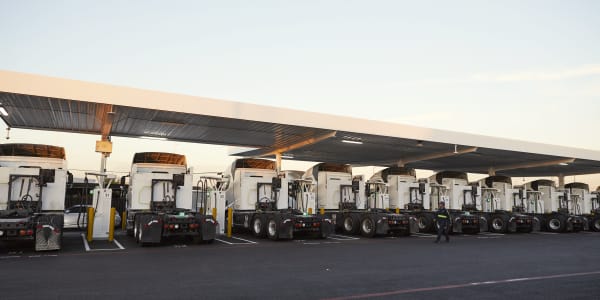
Warby Parker is already well known for its effort to get consumers to spend less on fashionable eyeglasses — a typical pair of frames costs no more than $100 with prescription lenses. And it's made the leap from e-commerce to brick-and-mortar retail. Now Warby Parker, valued at more than $1 billion, is becoming a vertically integrated company: fast, cost-efficient manufacturing supporting a website experience that blends into brick-and-mortar retail.
Manufacturing is the last piece in a three-pronged effort to extend from design to distribution, cutting out the eyewear middleman. The company's new Sloatsburg, New York, factory, called the Optical Lab, integrates lens-finishing and assembly.
Although the frames are made elsewhere in the world, the Lab is designed to cut lenses and fit them to frames, a critical step because every pair of eyewear is by design a custom product. Warby Parker, which previously worked exclusively with third-party optical labs, says the factory lets the seven-year-old company deliver the finished glasses faster and at lower cost.
The New York City-based start-up returned to the CNBC Disruptor 50 list in 2017.
Read More FULL LIST: 2017 DISRUPTOR 50
"The Warby Parker model or strategy is to be vertically integrated," said co-founder and CEO Neil Blumenthal. "It's how we're able to sell a $500 product at $95 dollars. We design the frames ourselves; we produce them using the best materials out there; now we're able to insert the lenses ourselves and ship direct to customers, [which] enables us to cut out the middleman."
Warby Parker is not the only spectacle manufacturer eyeing a vertically integrated business model. Earlier this year, lensmaker Essilor announced a merger with Italian framemaking behemoth Luxottica to create EssilorLuxottica, a company that controls everything from standalone U.S. retail outlet Lenscrafters to the in-store vision departments at Sears and Target. Large framemakers design and market frames under license with luxury labels; Luxottica's portfolio boasts brands such as Brooks Brothers, Prada and Tiffany & Co.
Bringing back brick-and-mortar retail
Although Warby Parker began by selling to consumers exclusively online, the company made a splash with its embrace of brick-and-mortar. Through e-commerce, it discovered something that brings shoppers back to physical retail stores.
"Over 75 percent of our customers who have purchased in our stores have been to our website first," said Blumenthal. "They're not going to the website just to look at the store address or the hours of operation. They're actually learning about the brand; they're browsing different products.
"The majority of retail in the U.S. — in the world — is done within the four walls of the store."
After observing customers walk in with paper lists of frames they were interested in, the company created favorite lists and accounts that allowed customers to save frames online — and have the frames ready to browse in-store.
"The future of retail is the intersection of digital and physical, bricks and mortar," Blumenthal said.
The company's model hasn't changed despite the brick-and-mortar presence, because Warby Parker is not wholesaling. "There's still not another party that's marking up our product three to five times before selling it to the customer."
By selling directly to customers, the company cuts out the middlemen it says typically contributes to the markup on eyewear. "There's no reason why [eyewear] needs to cost several hundred dollars," said Warby Parker co-founder David Gilboa. "We have that direct relationship with our customers that allows us to have a much more efficient business model."
Warby Parker plans to continue growing by focusing on making that relationship with the customer smoother from design to distribution, Blumenthal said. "You'll see us continue to capture more and more of that value chain ourselves."






